Lead with Self-initiative
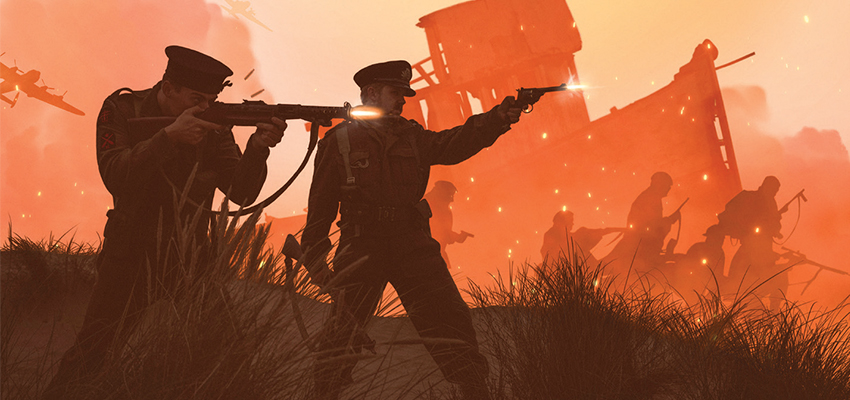
"Over the course of my 40 years in the army, I’ve continually engaged in operations, training, HR, administration and logistics, all of which have shaped me into a well-rounded leader. This comprehensive leadership experience is what defines an army officer"
— Maj. Gen. Ajey Sethi
A visionary leader with acumen in achieving success in a challenging environment, Maj. Gen. Ajey Sethi, is an accomplished Army General, having 36 years of experience in planning and execution of operations, project management, HR, administration, logistics and training. In his role as Additional Director General (Maharashtra, Gujarat and Goa) Headquarters Recruiting Zone-Pune, Ajey Sethi, has gained vast experience in the fields of administration, logistics, finance, legal and HR. He has been awarded Sena Medal, Vishisht Seva Medal, C-in-C Strategic Forces Commendation and two Chief of Army Staff Commendations. In an exclusive interview with Corporate Citizen, he takes us through his career journey, leadership and management experiences and much more
CC: Tell us about your early life, education and how you decided to come into the Indian Army?
Maj. Gen. Ajey Sethi: I was born and raised in Delhi, and when it was time to choose a career, I found myself at crossroads. I had two options: I had qualified for the JEE, with the opportunity to join IIT, and my high marks in Physics, Chemistry, Mathemaics would have allowed me to pursue engineering at top colleges. Simultaneously, I also qualified for the National Defence Academy (NDA), having cleared both the written exam and the Services Selection Board.
I faced a dilemma—whether to pursue a career in engineering or join the army. Ultimately, I chose the army because I was deeply passionate about it. That decision was made in 1984, and now, 40 years later, as I stand on the brink of retirement in 2024, I can confidently say that it was the right choice. My passion for the service has only grown over the years, and if the nation ever calls upon me, I would willingly return to serve even after retirement.
CC: What inspired you to join the army?
My passion for joining the army was ignited by reading tales of war heroes. The sense of nationalism and deep love for my country that I felt naturally, drew me towards a career in the military. While my brotherin-law did serve in the army, my desire to join the forces was kindled long before he became part of our family. After completing Std. XII, I joined the prestigious NDA and underwent rigorous training between 1984- 1987. Thereafter, I was in the Indian Military Academy (IMA) in 1987-88.
CC: How was your NDA experience?
When I joined the NDA, I knew that life was not going to be easy. It was clear that the path ahead was not a bed of roses and would be filled with challenges, demanding a tough and resilient spirit. I was fully prepared for this reality. While many cadets around me chose to leave midstream, disheartened by the physical and mental demands, I remained determined. The training was undoubtedly gruelling—physically exhausting and mentally challenging—but I persevered because my primary goal was to serve the nation and join the Army. My commitment to that purpose kept me going, and I pushed through every obstacle that came my way
CC: How was IMA different from the NDA?
IMA is a more professionally oriented academy, only for Army cadets who join after graduation, while NDA is a tri-services institution, which cadets join after std. XII. While IMA focuses on specialised Army training, NDA on the other hand imparts academic, basic military training and physical training. However, what is common in both is development of leadership traits, self discipline and military ethos, as they are called cradles of leadership. Cadets become officers after passing out from IMA, fully capable of leading troops in combat.
CC: Any anecdote you have to share on your first appointment in the Army?
I initially had aspirations of joining the engineering corps. However, I consider myself fortunate to have been posted to a highly esteemed unit, the 101 Field Regiment Self-Propelled, equipped with self propelled armoured guns. I joined this unit as a 2nd Lieutenant and served there for about three years. Those years were pivotal in shaping my career and moulding me into the person I am today. The early years of grooming and development in such a prestigious unit played a crucial role in my growth as an officer, laying the foundation for everything that followed in my military journey.
"In the civilian context, the economic cost is a critical factor. When we speak of “mission at all costs” in the army, it implies victory is to be achieved even at the cost of laying down one’s life"
CC: Why do you call 101 Field Regiment Self-Propelled a celebrated unit?
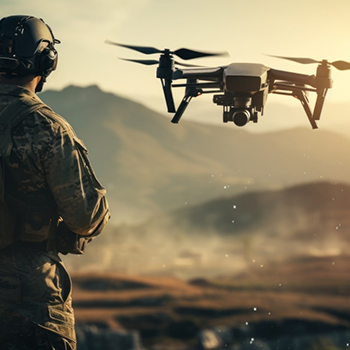
In army parlance, a “celebrated” unit refers to any outfit that has distinguished itself in war. The 101 Field Regiment Self-Propelled, to which I was assigned, is one such unit, having earned an Honour Title for its exceptional performance at Harar Kalan, an area strongly held by Pakistan during the legendary 1971 war. The tradition, ethos, and overall performance of the unit in both training and other military operations were exemplary, earning it a prestigious reputation. I felt immense pride in being commissioned into and associated with such a distinguished unit.
CC: Are you a war veteran?
One of the few regrets I have after 40 years in uniform is that I did not get the opportunity to participate in war although I have served during Op Parakram and Counter Insurgency operations in Assam, Op RHINO. Should there be a war or any call to arms, I would eagerly return, rejoin the army, and serve with the same passion and commitment that has driven me throughout my career.
CC: You did an independent director’s course at IIM. How has that helped you?
In the army, we are deeply immersed in a close-knit environment, surrounded by strong traditions, ethos, and a distinct culture. This often means that we aren’t as exposed to the outside world, even though there’s a great deal we could learn from it to complement our own.
The Independent Director’s Course, offered a perspective on higher-level leadership akin to strategic leadership in the Indian Army, demonstrating how things can be managed more efficiently and effectively. While it was an independent director’s course, it offered substantial learning opportunities that could be beneficial to our military leadership as well, showing that there is much we can imbibe from external experiences to enhance our own practices.
CC: Talking about the other way around, has it helped you in your present roles in HR and people management?
When we undergo training at the NDA and IMA, we are prepared to step into leadership roles from day one in our units. As soon as you join your unit, you are expected to lead and command. For instance, when I was commissioned as a 2nd Lieutenant, I was immediately responsible for operations with six guns and its crew during war. Training the crew, motivating them to perform in the face of the enemy, equipment management etc., are all essential elements of military leadership which has been instilled in all cadets before they become officers. Over the course of my 40 years in the army, I’ve continually engaged in operations, training, HR, administration and logistics, all of which have shaped me into a well-rounded leader. This comprehensive leadership experience is what defines an army officer.
CC: There are many defence veterans who have turned into HR leaders. Has your career in the defence helped you in your present roles and responsibilities in HR and people management?
In the army, it’s not just a job or a career; it’s a family. When we talk about HR, the bond between the highest-ranking officer and the soldier on the ground is deeply personal—it’s a brotherly connection. We refer to this as “brothers in arms.” This camaraderie and the esprit de corps that forms the core of our interactions are crucial in making us effective HR leaders. This bond allows you to understand what others are thinking, fostering empathy and compassion, while maintaining the mission as the top priority. The combination of these virtues — empathy and commitment to the mission, is what defines a truly effective HR leader in the military.
"Adaptation is crucial in every aspect of life, whether it’s in an educational institute, technology, or warfare. Without continuous adaptation and change, we risk becoming irrelevant"
CC: There are many discipline disparities between the military and the corporate environments. What aspects of military leadership amalgamate with leadership skills in corporate world? Are there any similarities and differences?
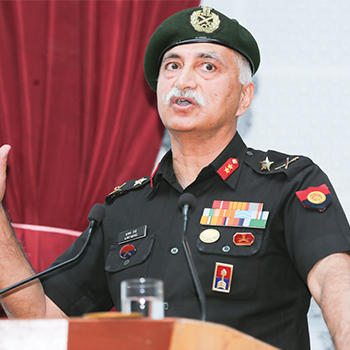
First, let’s discuss the similarities—the mission at all costs is a common factor whether in a corporate setting, an educational institute, or the army. Everyone is driven to accomplish work and achieve their goals, and this remains constant across all fields. How these goals are achieved also bears some similarity, as it must be done within a well-organised and positive environment to ensure sustainability. This environment is crucial for successful and ongoing performance.
However, this is where the similarities end and differences begin. In the civilian context, the economic cost is a critical factor. When we speak of “mission at all costs” in the army, it implies victory is to be achieved even at the cost of laying down one’s life.
Regarding HR in the military, the values and military ethos generate unwavering trust in leadership. The soldiers have full faith to put their lives in the hands of their leaders. This trust is generated by the Chetwode Motto “The safety, honour, and welfare of your country come first, always and every time. The honour, welfare, and comfort of the men you command come next. Your own ease, comfort, and safety come last, always and every time.”
Further, the army’s ethos, culture, and motivation are complemented by legal provisions, whereas in the civilian world- motivation, career progression and alignment with business goals are the primary drivers of HR.
CC: There is one principle of Charles Darwin “It is not that the strongest of the species that survives nor the most intelligent but the one most responsive to change.” Is the same true with the military and corporate world?
Adaptation is crucial in every aspect of life, whether it’s in an educational institute, technology, or warfare. Take the ongoing Ukraine-Russia conflict as an example. Despite Russia’s historical status as a superpower and its continued military strength, Ukraine’s adaptation has been remarkable. Civilians in Ukraine are operating drones, demonstrating how the adoption of new technology by non-military personnel has impacted the war. This adaptation, along with support from NATO, has prevented Russians from achieving a swift victory, contrasting sharply with the Indo-Pak war of 1971, which concluded in just 14 days. The protracted nature of the UkraineRussia conflict underscores the importance of adaptation. Consider Kodak, once the dominant force in photography but now virtually obsolete. This serves as a reminder that without continuous adaptation and change, we risk becoming irrelevant.
CC: Regarding technology and armed forces, do our armed forces need a real radical overhaul as far as technology is concerned. As far as Artificial Intelligence is concerned—is there any modernisation of armed forces going on to address such future technology challenges?
The progress is certainly being driven by the ‘Atmanirbhar Bharat’ initiative, which emphasises indigenisation. The government’s support is evident through the establishment of defence corridors and the imposition of import restrictions, mandating the procurement of Made in India weapons, ammunition, and equipment.
However, in terms of technology, we have historically lagged behind in research and development. The DRDO has been responsible for R&D, but achievements in this area have been limited. Nevertheless, over the last decade, there has been notable progress, though it is slow and our R&D capabilities are not yet cuttingedge. Additionally, corporate funding has started to play a significant role in R&D, particularly in aerospace research, drones, and related technologies. While it will take time to bridge the gap, I am confident that we will eventually catch up, provided there is increased funding for technology development.
CC: Regarding the present war between Israel and Palestine or Iran, there are drone attacks, but Israel has an upper hand because of it’s defence shield – Iron Dome. Are we (India) going to be prepared for such future war strategies involving technology and drone attacks?
Drones are indeed significant force multipliers in modern conflicts. In Yemen, the Houthis are using drones against the United States, a superpower that has struggled to prevent these drones from targeting ships and causing alarm. This situation highlights an interesting trend, where even a superpower is challenged by a non-state actor. It underscores the necessity for small, effective, and differentiated weapon systems. The cost aspect is also crucial, while a small drone used for attacks may only cost thousands of dollars, a Patriot missile fired to destroy this cheap drone costs millions of dollars. The cost matrix, or the cost exchange ratio, between these two types of systems is critical for sustaining long-term warfare. This balance between the price of advanced weaponry and the more affordable, yet potent, alternatives is essential for effective defence strategy
"Currently, we remain the largest importer of weapon systems, but the government’s initiatives are paving the way not only for a more selfreliant future but to become a net arms exporter nation"
CC: Should the government give a push to modernising the armed forces for addressing future challenges?

The government has indeed made significant strides in pushing the defence sector forward. It has introduced measures such as allowing foreign direct investment (FDI), establishing defence corridors, and imposing restrictions on certain imported items. Today, if the army wishes to procure an item, it must adhere to a long list of items that cannot be imported. This has already provided a substantial boost to the sector. Additionally, initiatives like the iDEX Open challenges, which encourage participation from MSMEs, and various funding mechanisms for new startups, further support this progress. These efforts are steering us towards greater indigenisation of weapon systems. Currently, we remain the largest importer of weapon systems, but the government’s initiatives are paving the way not only for a more self-reliant future but to become a net arms exporter nation.
CC: You are in charge of recruitment in three states. So how has been the response? When you were in the army there were lot of youngsters who really wanted to go there and now with the whole corporate and technology options, could you give your observations?
I am responsible for recruitment in Maharashtra, Gujarat, and Goa. When I first joined the Army, back in 1984, the corporate world had not yet emerged significantly; it was predominantly focused on government services including the Indian Army. However, after the 1991 liberalisation, the corporate sector expanded rapidly, paving way for diverse career opportunities in the corporate world. Regarding joining the Indian Army, I emphasise that the most suitable candidates are those driven by passion to serve and have that spirit of adventure. While the emoluments are more than sufficient to ensure a comfortable life, we do not seek individuals who are motivated solely by financial benefits. I am pleased to state that there are still many enthusiastic students who aspire to serve our nation, and they continue to join in good numbers.
CC: Just as corporates face challenges dealing with the Gen Z and Gen Alpha mindset, does the army encounter similar issues during recruitment?
Fortunately, the army benefits from the fact that the young candidates we are enrolling are technologically proficient and keen to learn. The younger officers who joined after I reached the middle level were significantly more adept with technology than I was. Many of them were technical graduates entering the artillery, and their skills were a great asset. In my view, the youngsters joining the army today are a tremendous asset, bringing valuable expertise and adaptability to the force.
CC: How many have you managed to recruit annually in the last 5 years?
In the Indian Army, approximately 60,000 to 70,000 recruits have been added each year over the past five years. This figure is reflective of the current recruitment levels. However, with the Agnipath scheme in place, which phases out 75 % Agniveers every four years, there will be an increase in recruitment numbers to fill in this high wastage rate, besides recruitment to fill the vacancies arising due to soldiers retiring after their full service.
The recruitment process involves both long-term regular and Agniveer cadres. For certain branches like the Medical Corps, the focus remains on long-term employment, while other roles are filled by Agniveers. This combination of recruitment types contributes to the overall numbers.
CC: What about girls joining the army?
Regarding women recruits, the response has been outstanding. The numbers were initially limited, but the passion and interest among women have been significant. Many women candidates have shown remarkable dedication, with some achieving CGPAs close to 9. Unfortunately, due to the limited number of vacancies, many highly qualified women candidates could not be selected. However, the response from women has been exceptional, with their overall quality being notably high.
"In the army, we are deeply immersed in a close-knit environment, surrounded by strong traditions, ethos, and a distinct culture. This often means that we aren’t as exposed to the outside world, even though there’s a great deal we could learn from it to complement our own"
CC: What are the qualities required in a youngster to make it good in the defence forces?
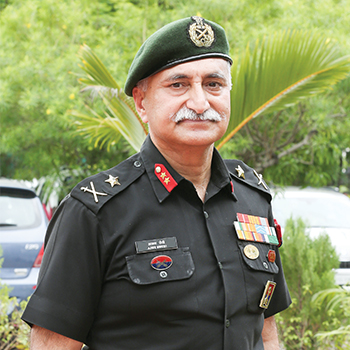
Good set of values, self-discipline and selfinitiative are crucial qualities for a successful candidate. It is important not to need constant instructions on what to do; instead, you should proactively identify tasks and handle them independently. Regarding skills and aptitude, even if you are only average or above average, the organisational culture and training will ensure your growth and development. The key is maintaining the right attitude, characterised by selfdiscipline and a proactive approach.
CC: But how do you know when you are recruiting that they do have these two qualities?
For officers, the selection process involves a series of tests, including psychological assessments, group task evaluations and interview by a board. These tests gauge your personality and performance in a group setting, including whether you naturally emerge as a leader. The psychological assessments are designed to thoroughly examine the contours of your personality. This comprehensive evaluation spans five days and includes personal oneon-one interviews. The procedure is timetested and developed by the Directorate of Information and Public Relations (DIPR), an organisation under Defence Research and Development Organisation (DRDO), and it ensures that the most suitable candidates are selected. For testing personality traits while selecting soldiers below officers rank, an adaptability test is being planned by the Director General Recruiting from the next year.
CC: So, are the youngsters who join come from traditional defence backgrounds or are they first generation ones?
Recently, I attended a seminar in Delhi with a Major General, who has two sons currently serving in the army. This is indicative of the trend where many families have secondgeneration members, including daughters, who join the army. We also see first-timers entering the force. In terms of recruitment from B-Towns, we have a diverse range of candidates coming from urban, rural and semi-urban areas. The primary criterion is their attitude towards selfless service and keenness to learn. Provided they possess a willingness to learn, these individuals can be moulded into effective leaders, regardless of their background.
"When we talk about HR, the bond between the highest-ranking officer and the soldier on the ground is deeply personal—it’s a brotherly connection. We refer to this as “brothers in arms.” This camaraderie and the esprit de corps that forms the core of our interactions are crucial in making us effective HR leaders"
CC: Out of the three states, from where do you get the highest number of candidates?
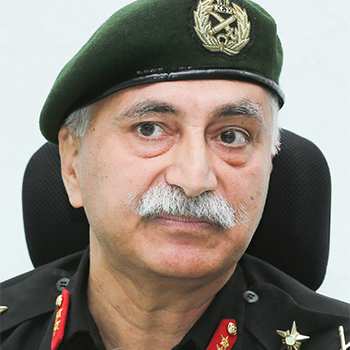
I am responsible for recruitment from the states of Maharashtra, Gujarat, Goa and UTs of Dadra and Nagar Haveli, Daman and Diu. Goa has notably fewer applicants while Maharashtra, on the other hand, has a fairly large number of candidates. Gujarat also performs reasonably well with a satisfactory number of applicants.
CC: Now that you have just retired, what’s your next plan of action? Will you move from Military to Management in the corporate world?
My primary goal is to give back to society for all that I have gained during my time in the army. I am looking to engage in activities where I can contribute meaningfully and make a positive impact. With my background in leadership, management, defence technology, education, HR, and administration, I am open to serving in any capacity that can benefit the country, the younger generation, or the broader community.
CC: What’s the philosophy of life that you live by?
My philosophy in life is centred on achieving happiness through service. My 40 years experience in uniform has vindicated this philosophy wherein by selfless service, I am retiring with a deep sense of fulfillment, pride and honour. Therefore, postretirement, I remain committed to continue selfless service to remain happy and content.